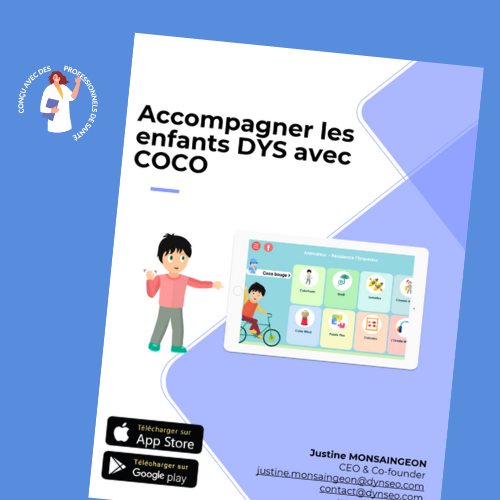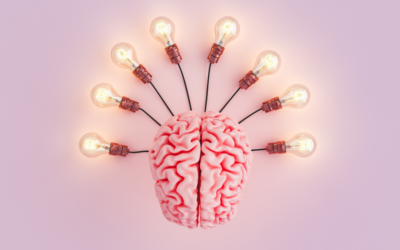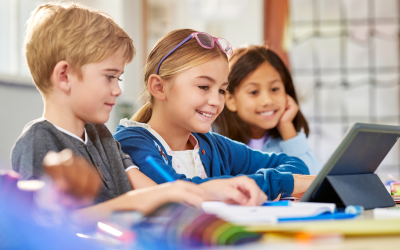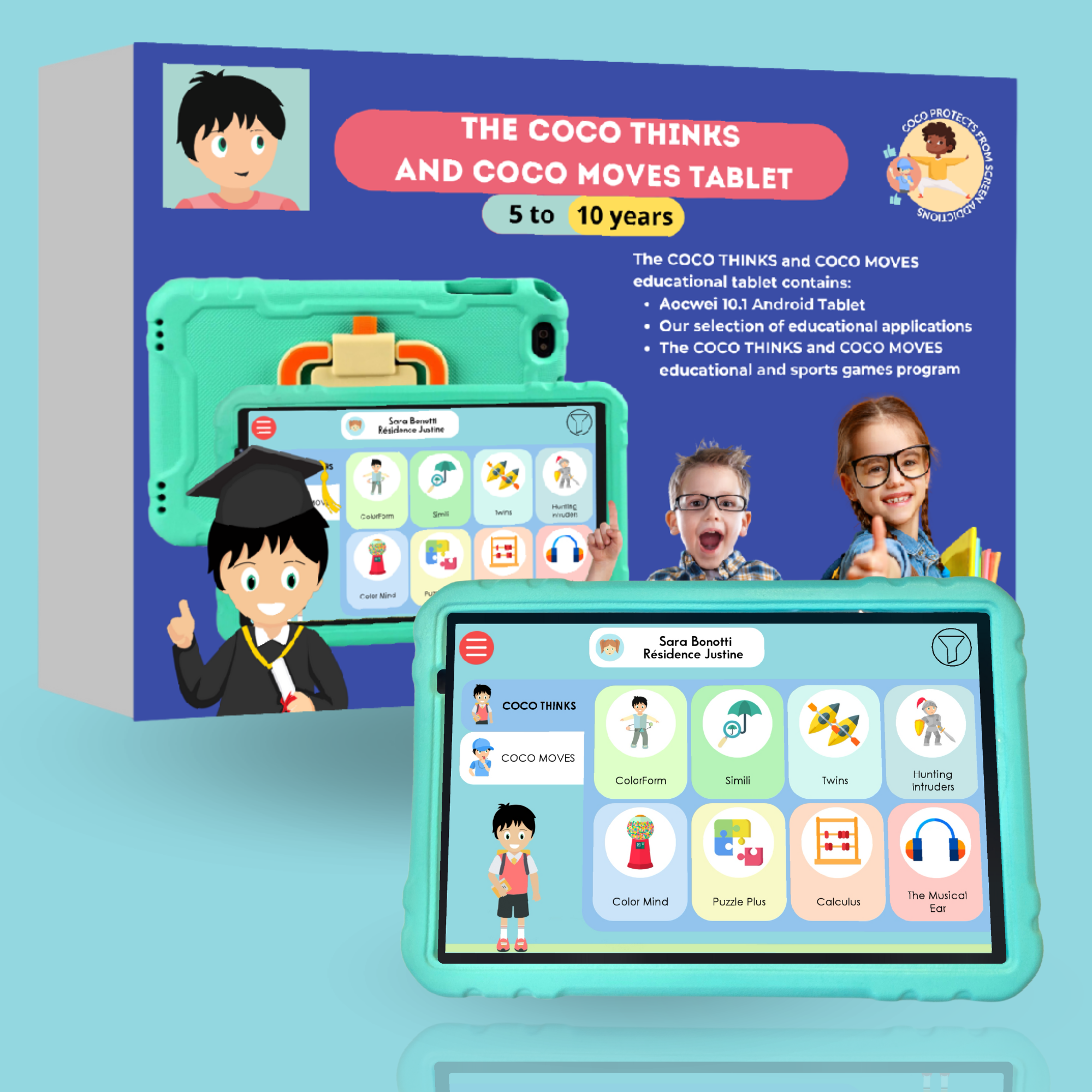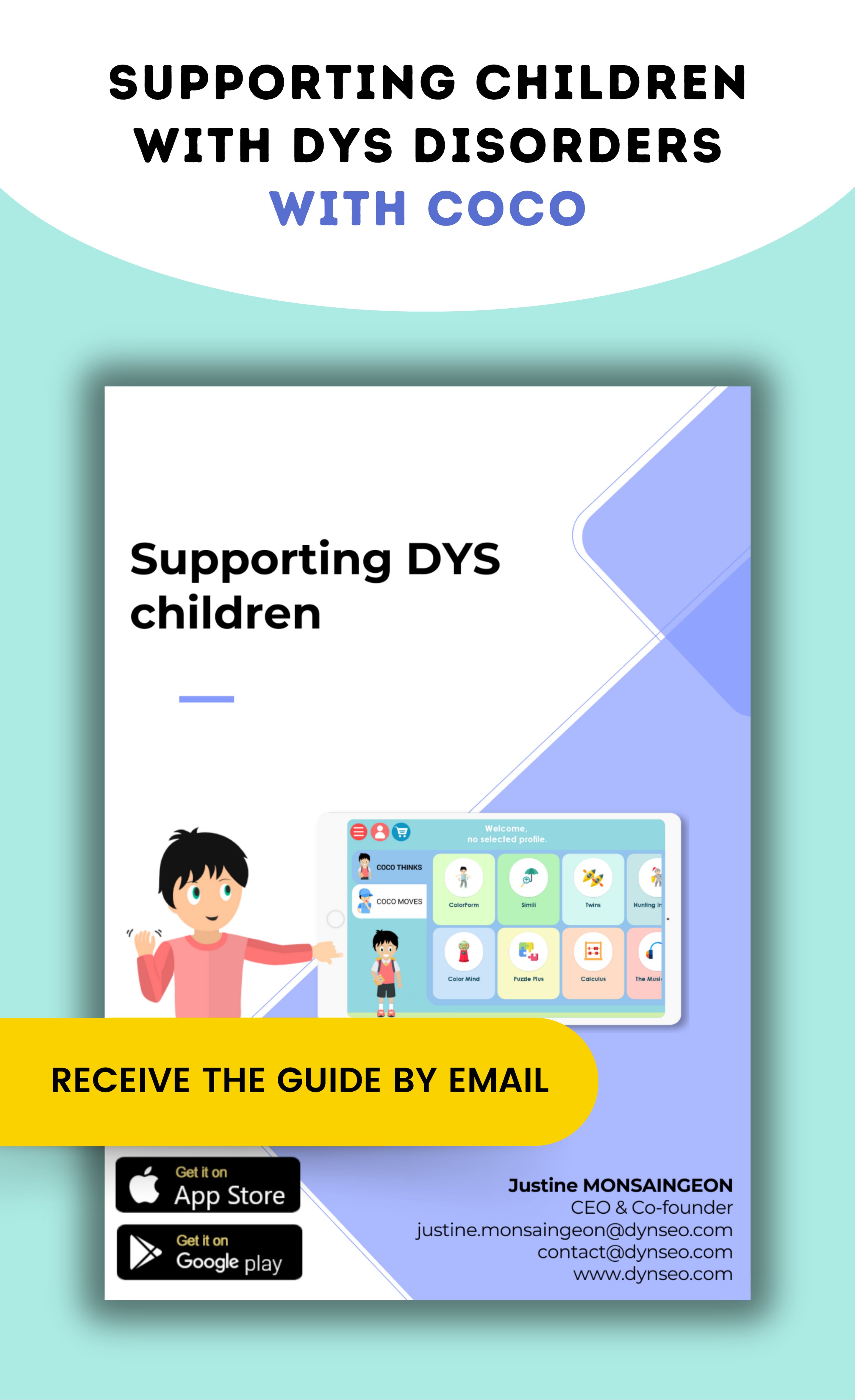Relaxation and stress management are important for children with learning disabilities. These children can often experience difficulties with attention, anxiety and emotional regulation, which can affect their general well-being. Relaxation and stress management can help these children to relax, concentrate and manage their emotions more effectively.
The benefits of relaxation for children with DYS
Relaxation offers many benefits for children with DYS. Firstly, it improves concentration and attention. Children with DYS may find it hard to concentrate on a task for long periods, but relaxation can help them calm down and focus more effectively.
Secondly, relaxation reduces anxiety and stress. Children with DYS can often feel extra pressure due to their learning difficulties, which can lead to increased stress and anxiety. Relaxation can help reduce these negative feelings and promote a calmer, more relaxed state of mind.
Thirdly, relaxation improves sleep quality. Children with DYS may have difficulty falling asleep or staying asleep due to stress or anxiety. Relaxation can promote deeper, more restful sleep, which is essential for their overall well-being.
Finally, relaxation increases self-awareness and emotional regulation. Children with DYS may struggle to recognize and manage their emotions, but relaxation can help them develop a better understanding of their own feelings and find healthy ways to deal with them.
Different relaxation techniques for children with DYS
There are several relaxation techniques that can benefit children with DYS. Here are some of the most commonly used techniques:
1. Progressive muscle relaxation: This technique involves gradually contracting and releasing the body’s muscles to promote relaxation. Children can start by contracting and releasing their fists, then move on to other parts of the body, such as arms, legs and face.
2. Guided imagery: This technique involves mentally guiding the child to a calm, peaceful place using detailed descriptions. Children can imagine they’re on a beach or in a forest, focusing on the sensations and sounds around them.
3. Mindfulness meditation: This technique involves concentrating on the present moment, observing thoughts and sensations without judgment. Children can practice mindfulness meditation by concentrating on their breathing or using visualization exercises.
4. Breathing exercises: Deep breathing exercises can help children to calm down and relax. They can try breathing deeply, counting to four as they inhale, then exhaling slowly, counting to four.
5. Sensory activities: Sensory activities, such as playing with kinetic sand or listening to relaxing music, can help children relax and concentrate. These activities stimulate the senses and promote a state of calm and relaxation.
How to help children with DYS relax
Meditation for children with DYS: How does it work?
Breathing exercises to help children with DYS relax
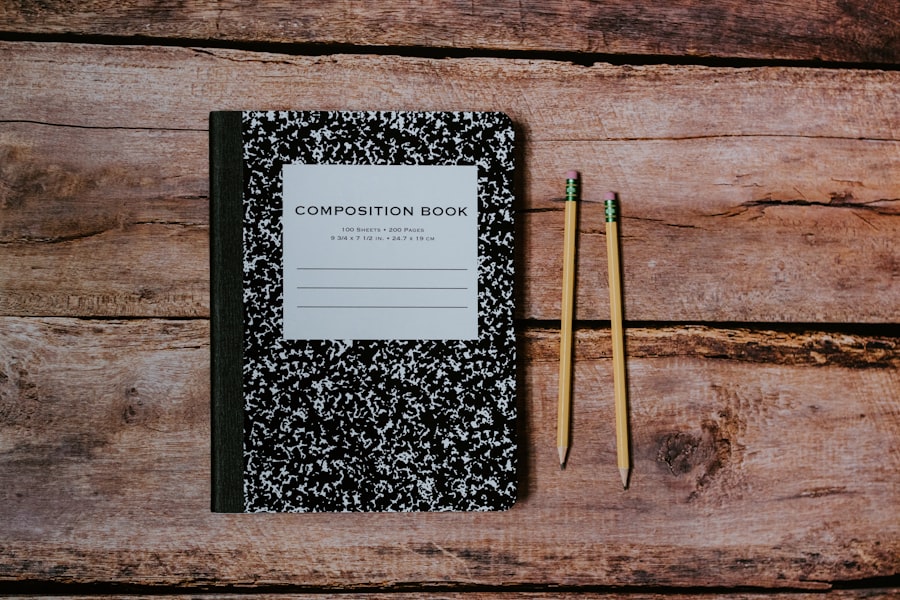
Breathing exercises are an effective and accessible way of helping children with Dyslexia to manage stress and improve concentration. By facilitating better oxygenation of the brain, these techniques can play a key role in their daily well-being. Here are some suggestions for enriching and diversifying the practice of breathing exercises, making them more attractive and suitable for children:
1. Abdominal breathing :
Children can lie on their backs, placing one hand on their stomachs and the other on their chests. They can breathe in slowly through their nose, inflating their belly, then breathe out slowly through their mouth, emptying their belly.
2. Square breathing :
Children can imagine a square and mentally follow its sides as they breathe. They can inhale for four beats, hold their breath for four beats, exhale for four beats and hold their breath for four beats.
3. Flower breathing
Children can imagine breathing in a flower through their nose and gently blowing the petals through their mouth. They can repeat this process several times to relax.
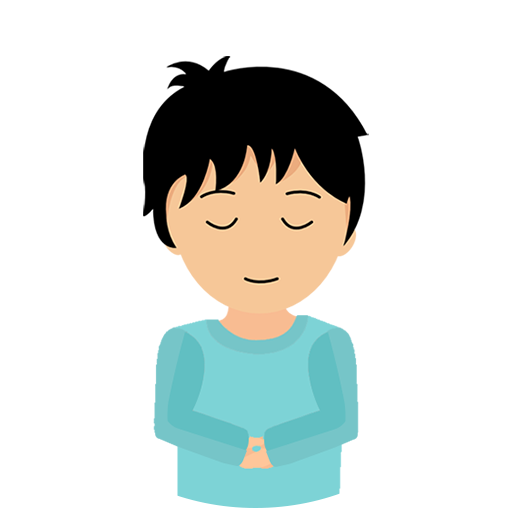
4. Dragon’s breath
This playful technique involves asking children to imagine they are dragons. They inhale deeply through their nose, then, as they exhale through their mouth, they imagine spitting fire or smoke. This exercise not only captures their imagination, but also allows them to practice a long, controlled exhalation, contributing to their relaxation.
5. Rainbow breathing
For this exercise, invite children to imagine the colors of a rainbow. With each inhalation, they think of a color that spreads throughout their body, and with each exhalation, they imagine another color. This can not only help them focus on their breathing, but also use visualization to induce calm.
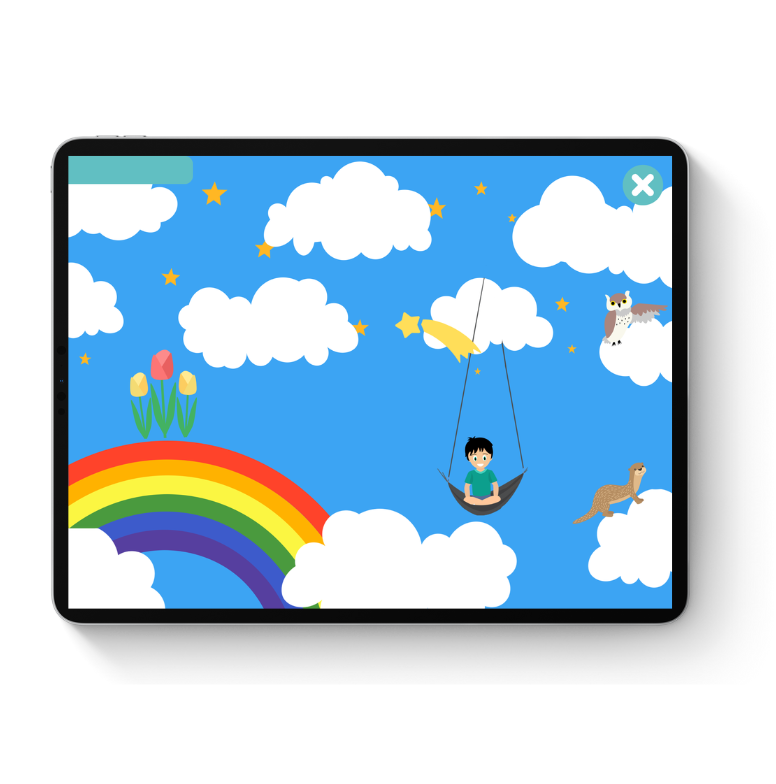
The Quiet Time game on COCO BOUGE
6. The hot-air balloon
This exercise asks children to imagine themselves as hot-air balloons. As they inhale, they imagine the balloon inflating and rising, and as they exhale, the balloon gently deflates and descends. This helps children visualize their breathing, making the exercise more concrete and engaging.
7. Movement-guided breathing
Incorporating simple movements into breathing practice can be particularly beneficial for children with DYS. For example, children can raise their arms above their heads as they breathe in, and lower them as they breathe out. This type of exercise helps synchronize movement and breathing, promoting greater body awareness.
8. The candle-blowing technique
Ask the children to imagine themselves in front of a birthday cake with candles. They inhale deeply through the nose, then exhale through the mouth as if they were blowing out candles. This technique encourages a strong, controlled exhalation, useful for releasing tension.
Integration into daily routine
To maximize the benefits of breathing exercises, we recommend incorporating them into your child’s daily routine. Regular practice, even for a short time, can help to establish a reflex of deep breathing in situations of stress or difficulty.
It’s also important to create an atmosphere conducive to relaxation during these exercises, for example by choosing a quiet place, turning off screens and making sure the child is comfortable. Encouragement and patience are essential, especially at first, as it can be difficult for some children to concentrate on their breathing. Celebrating progress, however minor, can go a long way towards motivating them and giving them a sense of achievement.
Sensory activities for relaxation
Sensory activities can be beneficial for children with DYS, helping them to relax and concentrate. Here are a few examples of sensory activities to try:
1. Playing with kinetic sand: Kinetic sand is a soft, malleable substance that can be shaped and manipulated. Children can play with kinetic sand by pressing, rolling or cutting it to promote relaxation.
2. Listen to relaxing music: Relaxing music can help children with DYS relax and calm down. They can listen to soft, soothing music during their moments of relaxation.
3. Use sensory balls: Sensory balls are liquid-filled balls or small objects that provide tactile stimulation. Children can squeeze, throw or roll them over their bodies to promote relaxation.
Visualization for stress management in children with DYS
Visualization can be beneficial for children with DYS, helping them to relax and manage stress. Visualization involves mentally imagining a calm, peaceful place, focusing on sensory details such as colors, sounds and smells.
To introduce visualization to children with DYS, it’s important to make the exercise interactive and fun. Children can close their eyes and imagine they’re on a sunny beach, focusing on the sound of the waves and the feel of the sand beneath their feet.
Using relaxation to improve concentration in children with DYS
Relaxation can help improve concentration in children with DYS by promoting a state of calm and relaxation. When children are relaxed, they are more likely to be able to concentrate on a task for longer periods.
To incorporate relaxation into the daily routine of children with DYS, it’s important to set aside time for it. This can include meditation sessions or sensory activities before or after periods of study or work.
The mental health benefits of relaxation for children with DYS
Relaxation can have many benefits for the mental health of children with DYS. It can help reduce stress, anxiety and depressive symptoms, which can improve their overall well-being.
It is important to note that relaxation alone cannot solve all the mental health problems of children with DYS. It is essential to seek professional help if symptoms persist or worsen.
Relaxation and stress management are important tools for helping children with DYS to relax, concentrate and manage their emotions. Various relaxation techniques, such as meditation, breathing exercises and sensory activities, can offer many benefits to children with DYS.
It’s important to encourage children to try out different relaxation techniques and find the ones that work best for them. It’s also essential to seek professional help if symptoms persist or worsen. By combining relaxation with other learning strategies adapted to the needs of children with DYS, it is possible to improve their general well-being and quality of life.
AND FOR MORE INFORMATION
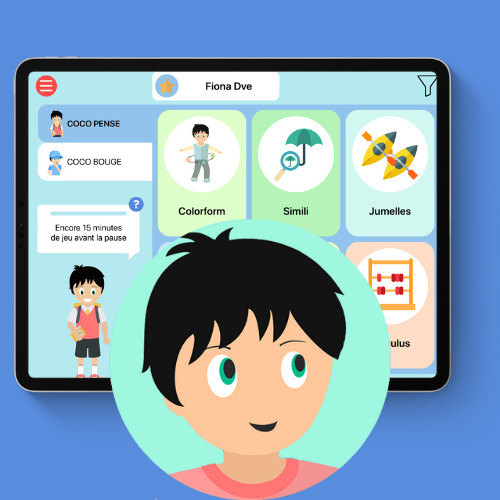
COCO, CHILDREN’S GAMES DYS
Coco pense et Coco bouge is an educational games program for dyslexic, dyspraxic, dysphasic and dyscalculic children aged 5 to 10. A variety of games to work on all cognitive functions. 15 minutes of screen time = 1 sports break
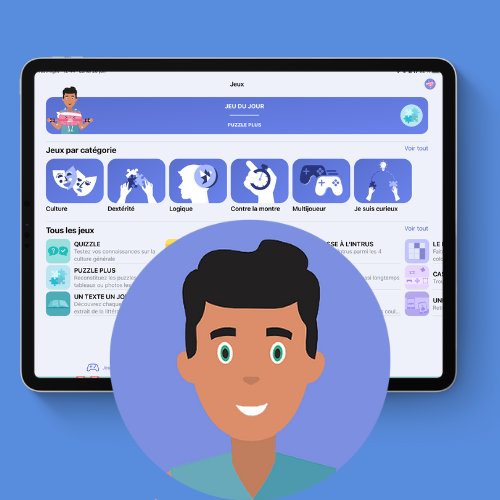
JOE, FOR DYSLEXIC ADULTS
The JOE program, your brain coach, will be able to support dysfunctional teenagers and adults. They can search for games by cognitive function. Joe will also be able to recommend the games best suited to each user’s needs. Smartphone and tablet.
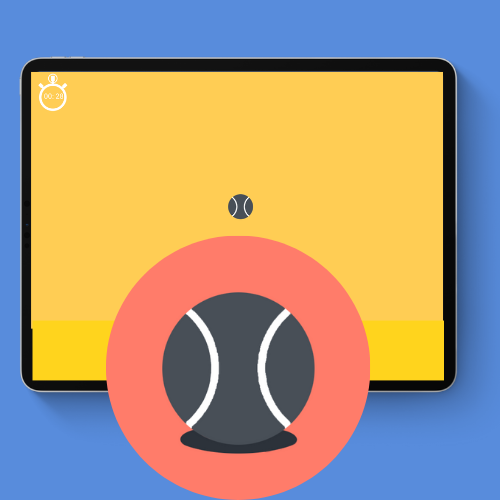
THE MARBLE THAT ROLLS FOR ATTENTION
The Bille qui Roule application is an innovative tool designed to work on attention and concentration through fun games. The tabletop is used as a pendulum to perform the exercises. For example, you have to follow the ball and keep it in a circle, etc.
Other articles that might interest you:
10 Effective Pedagogical Strategies to Support Children with DYS Disorders.
Children with DYS disorders face many challenges in their educational journey. They may have difficulty reading and...
The Role of Audio Books in the Learning of Dyslexic Children.
Dyslexic children face many difficulties when it comes to reading. The first problem they face is decoding, i.e. the...
Teacher training for DYS disorders
In this webinar, we will give you keys to support your students suffering from DYS disorders: dyslexia, dyspraxia,...


